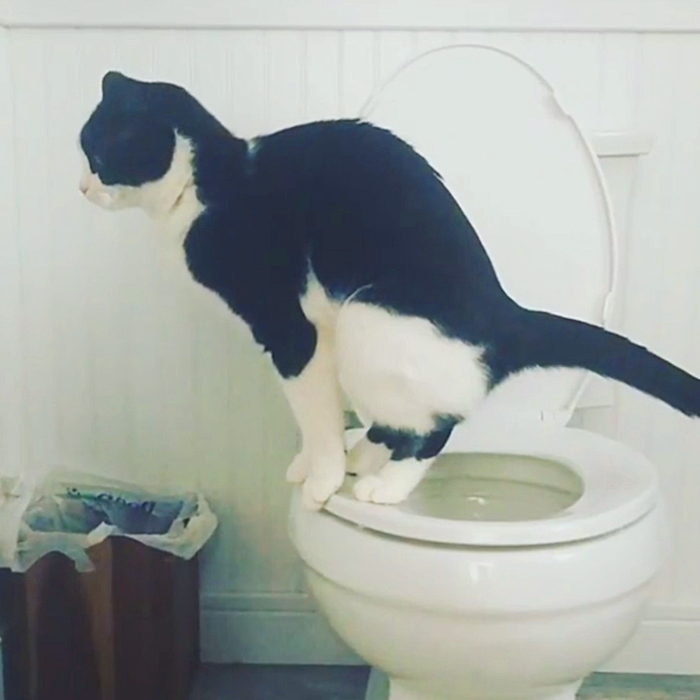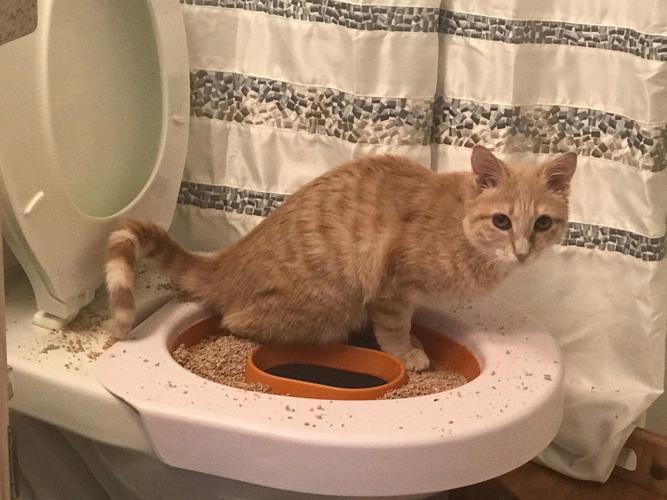Avoid Flush Cat Poop Down Your Toilet - Maintain Your House's Plumbing Integrity
Avoid Flush Cat Poop Down Your Toilet - Maintain Your House's Plumbing Integrity
Blog Article
Just how do you feel in relation to Don’t flush cat feces down the toilet?

Introduction
As cat owners, it's important to bear in mind exactly how we dispose of our feline friends' waste. While it may seem hassle-free to purge feline poop down the commode, this practice can have destructive effects for both the atmosphere and human wellness.
Alternatives to Flushing
Fortunately, there are safer and more liable means to take care of feline poop. Take into consideration the following alternatives:
1. Scoop and Dispose in Trash
One of the most usual method of taking care of cat poop is to scoop it right into a biodegradable bag and toss it in the trash. Make certain to use a committed trash inside story and throw away the waste quickly.
2. Use Biodegradable Litter
Select naturally degradable feline litter made from materials such as corn or wheat. These clutters are eco-friendly and can be securely taken care of in the trash.
3. Hide in the Yard
If you have a backyard, consider hiding pet cat waste in a designated location far from vegetable gardens and water resources. Make sure to dig deep adequate to stop contamination of groundwater.
4. Set Up a Pet Waste Disposal System
Purchase a pet dog waste disposal system especially designed for cat waste. These systems make use of enzymes to break down the waste, decreasing smell and environmental impact.
Health Risks
In addition to ecological problems, flushing cat waste can also posture health and wellness dangers to human beings. Pet cat feces might consist of Toxoplasma gondii, a bloodsucker that can create toxoplasmosis-- a possibly severe disease, particularly for expecting females and people with damaged body immune systems.
Environmental Impact
Flushing cat poop introduces unsafe pathogens and parasites right into the supply of water, presenting a considerable danger to water communities. These contaminants can negatively impact marine life and concession water top quality.
Final thought
Liable animal possession prolongs past supplying food and shelter-- it additionally entails appropriate waste management. By refraining from purging pet cat poop down the bathroom and going with alternate disposal methods, we can lessen our environmental footprint and safeguard human health and wellness.
Why Can’t I Flush Cat Poop?
It Spreads a Parasite
Cats are frequently infected with a parasite called toxoplasma gondii. The parasite causes an infection called toxoplasmosis. It is usually harmless to cats. The parasite only uses cat poop as a host for its eggs. Otherwise, the cat’s immune system usually keeps the infection at low enough levels to maintain its own health. But it does not stop the develop of eggs. These eggs are tiny and surprisingly tough. They may survive for a year before they begin to grow. But that’s the problem.
Our wastewater system is not designed to deal with toxoplasmosis eggs. Instead, most eggs will flush from your toilet into sewers and wastewater management plants. After the sewage is treated for many other harmful things in it, it is typically released into local rivers, lakes, or oceans. Here, the toxoplasmosis eggs can find new hosts, including starfish, crabs, otters, and many other wildlife. For many, this is a significant risk to their health. Toxoplasmosis can also end up infecting water sources that are important for agriculture, which means our deer, pigs, and sheep can get infected too.
Is There Risk to Humans?
There can be a risk to human life from flushing cat poop down the toilet. If you do so, the parasites from your cat’s poop can end up in shellfish, game animals, or livestock. If this meat is then served raw or undercooked, the people who eat it can get sick.
In fact, according to the CDC, 40 million people in the United States are infected with toxoplasma gondii. They get it from exposure to infected seafood, or from some kind of cat poop contamination, like drinking from a stream that is contaminated or touching anything that has come into contact with cat poop. That includes just cleaning a cat litter box.
Most people who get infected with these parasites will not develop any symptoms. However, for pregnant women or for those with compromised immune systems, the parasite can cause severe health problems.
How to Handle Cat Poop
The best way to handle cat poop is actually to clean the box more often. The eggs that the parasite sheds will not become active until one to five days after the cat poops. That means that if you clean daily, you’re much less likely to come into direct contact with infectious eggs.
That said, always dispose of cat poop in the garbage and not down the toilet. Wash your hands before and after you clean the litter box, and bring the bag of poop right outside to your garbage bins.
https://trenchlesssolutionsusa.com/why-cant-i-flush-cat-poop/

As a passionate person who reads on Don’t flush cat feces down the toilet, I thought sharing that article post was important. So long as you liked our page please do not forget to share it. We truly appreciate reading our article about Don’t flush cat feces down the toilet.
Get Your Estimate Now Report this page